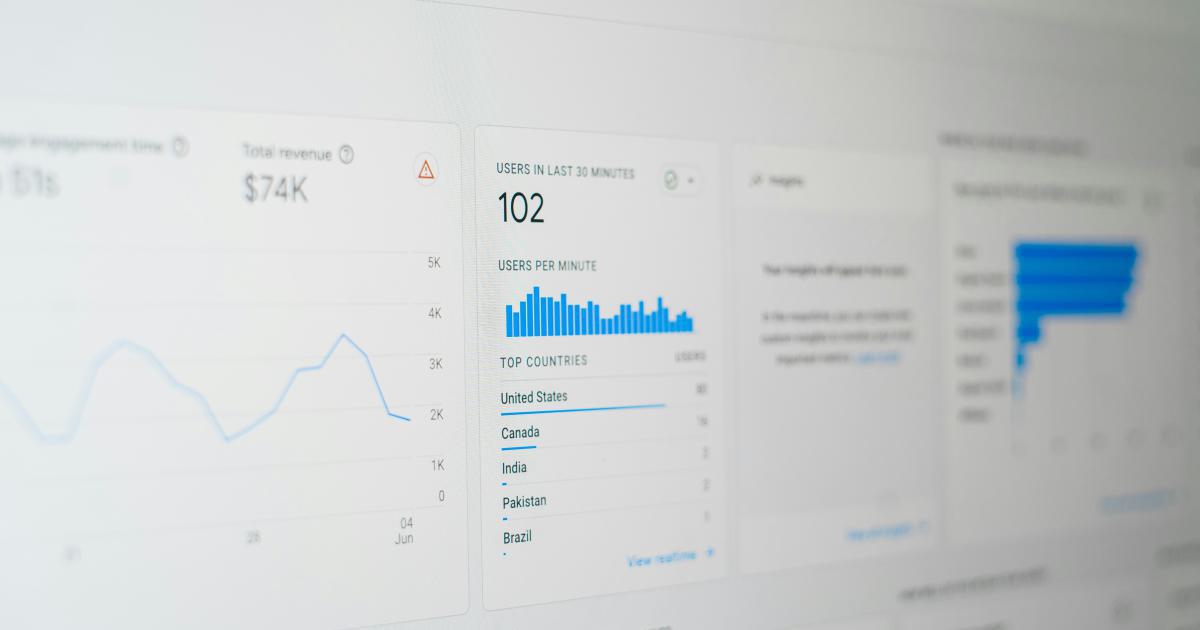Mastering the Art of Multilingual Keyword Analysis


Understanding the Importance of Multilingual Keyword Analysis

In today's global digital landscape, the ability to effectively analyze and leverage multilingual keywords is crucial for businesses and marketers looking to expand their reach and connect with diverse audiences. As the world becomes increasingly interconnected, understanding the nuances of keyword research and optimization in multiple languages is no longer a luxury but a necessity.
Multilingual keyword analysis involves the systematic identification, evaluation, and utilization of search terms and phrases in various languages. This strategic approach enables organizations to:
Reach Global Audiences: By targeting keywords in multiple languages, businesses can tap into new markets and connect with potential customers from diverse linguistic backgrounds.
Improve Search Engine Visibility: Optimizing content and campaigns for multilingual keywords can enhance a website's or brand's search engine rankings, ensuring greater visibility and discoverability across the globe.
Enhance User Experience: Providing content and experiences tailored to the language preferences of users can significantly improve engagement, conversion rates, and overall customer satisfaction.
Gain Competitive Advantage: Mastering multilingual keyword analysis allows businesses to stay ahead of the curve, outmaneuvering competitors and capturing a larger share of the global market.
To truly unlock the power of multilingual keyword analysis, it is essential to understand the underlying principles, techniques, and best practices. In this comprehensive article, we will dive deep into the world of multilingual keyword research, exploring strategies, tools, and real-world examples to help you become a true master in this critical domain.
Laying the Foundation: Understand Keyword Research Basics

Before delving into the intricacies of multilingual keyword analysis, it is crucial to have a solid grasp of the fundamental principles of keyword research. Keyword research is the process of identifying the specific terms and phrases that users employ when searching for information, products, or services online.
The core objectives of keyword research include:
Identifying Relevant and High-Potential Keywords: Discovering the most relevant and high-volume keywords that align with your business goals and target audience.
Analyzing Keyword Competition: Evaluating the level of competition for specific keywords to determine the feasibility of ranking for them.
Informing Content and Marketing Strategies: Using keyword insights to guide the creation of content, optimize website structure, and develop targeted marketing campaigns.
By mastering these core concepts, you will be better equipped to navigate the complexities of multilingual keyword analysis and leverage the insights to drive tangible business results.
Conducting Effective Keyword Research

Effective keyword research involves a systematic approach that includes the following steps:
Brainstorming Seed Keywords: Start by generating a list of initial keywords and phrases related to your products, services, or industry.
Utilizing Keyword Research Tools: Leverage various keyword research tools, such as Google Keyword Planner, Ahrefs, or SEMrush, to uncover additional relevant keywords, search volume data, and competition levels.
Analyzing Keyword Metrics: Carefully examine the search volume, competition, and relevance of each keyword to identify the most promising opportunities.
Grouping and Organizing Keywords: Cluster related keywords into logical groups or themes to better understand their potential applications and optimize your content and campaigns.
Continuously Refining and Updating: Regularly revisit your keyword research, as the online landscape is constantly evolving, and new opportunities may arise.
By following this structured approach, you can build a solid foundation for your multilingual keyword analysis efforts.
Exploring the Multilingual Keyword Research Process

Transitioning from monolingual to multilingual keyword research requires a more nuanced and comprehensive approach. Let's delve into the key steps involved in this process:
Step 1: Identify Your Target Markets and Languages
The first step in multilingual keyword analysis is to determine which markets and languages you want to target. This decision should be based on factors such as your business goals, the geographic distribution of your customer base, and the potential for growth in new regions.
Consider the following when selecting your target languages:
- Current Market Presence: Analyze the languages spoken by your existing customers or target audience.
- Competitor Landscape: Identify the languages used by your competitors and explore potential opportunities in underserved markets.
- Global Trends and Opportunities: Research industry-specific data and global market trends to identify high-potential, multilingual keyword opportunities.
Step 2: Translate and Localize Your Keyword List

Once you have determined your target languages, the next step is to translate and localize your existing keyword list. This process involves more than just literal translation; it requires a deep understanding of the cultural, linguistic, and contextual nuances of each language.
Consider the following best practices for translating and localizing your keywords:
Work with Professional Translators: Engage native-speaking translators or language experts to ensure accurate and culturally-appropriate translations.
Conduct Keyword Research in the Target Languages: Utilize local keyword research tools and resources to uncover additional relevant terms and phrases.
Adapt Keywords to Local Conventions: Adjust keyword syntax, grammar, and formatting to align with the target language's conventions.
Consider Local Dialects and Slang: Incorporate regional variations and colloquial expressions to reach a wider audience within each target market.
Continuously Refine and Optimize: Regularly review and update your translated keyword list to account for changes in user behavior and search trends.
Step 3: Analyze Keyword Performance and Competition

With your translated and localized keyword list in hand, the next step is to analyze the performance and competition for each term or phrase. This involves the following key activities:
Evaluate Search Volume and Trends: Assess the monthly search volume and search trend data for each keyword in the target languages, using tools like Google Keyword Planner or SEMrush.
Assess Keyword Competition: Determine the level of competition for each keyword by analyzing factors such as the number of competing websites, the quality of content, and the overall search engine optimization (SEO) strategies of your competitors.
Identify Keyword Opportunities: Based on the search volume and competition data, pinpoint the most promising keyword opportunities that align with your business goals and target audience.
Monitor and Adjust: Continuously track the performance of your multilingual keywords, making adjustments to your strategies as needed to maintain their effectiveness.
By thoroughly analyzing keyword performance and competition, you can make informed decisions about which terms and phrases to prioritize in your multilingual content and marketing efforts.
Leveraging Multilingual Keywords Across Your Digital Ecosystem

Mastering multilingual keyword analysis is just the first step; the true power lies in effectively leveraging these insights across your entire digital ecosystem. Here's how you can integrate multilingual keywords into your various marketing and content initiatives:
Website Optimization

Ensure your website is optimized for multilingual keywords by:
Translating and Localizing Website Content: Provide fully translated and culturally-adapted versions of your website content to cater to each target market.
Implementing Multilingual URL Structures: Use language-specific subdomains or subdirectories to organize your website content by language.
Optimizing On-Page Elements: Incorporate relevant multilingual keywords into page titles, meta descriptions, headings, and other on-page elements.
Leveraging Multilingual Schema Markup: Utilize schema.org structured data to provide search engines with clear language signals for your website content.
Content Creation and Optimization

Develop high-quality, multilingual content that resonates with your target audiences by:
Creating Targeted Content Campaigns: Produce content, such as blog posts, videos, or infographics, optimized for specific multilingual keyword opportunities.
Localizing Existing Content: Translate and adapt your best-performing content to reach new linguistic markets.
Optimizing Content for Search: Strategically incorporate relevant multilingual keywords throughout your content to improve search visibility.
Leveraging Multilingual Influencers: Partner with influencers or subject matter experts who can create and promote content in your target languages.
Multilingual Search Engine Marketing (SEM)

Integrate multilingual keywords into your search engine marketing campaigns to expand your reach and impact:
Multilingual Paid Search Campaigns: Create targeted pay-per-click (PPC) ad campaigns optimized for your multilingual keyword sets.
Multilingual Search Engine Optimization (SEO): Implement comprehensive SEO strategies to improve organic search rankings for your multilingual content and website.
Multilingual Social Media Advertising: Leverage social media platforms to run targeted ad campaigns featuring your multilingual keywords and content.
Multilingual Email Marketing: Personalize your email marketing communications by incorporating relevant multilingual keywords and content.
Multilingual Analytics and Reporting

Continuously monitor and analyze the performance of your multilingual keyword efforts by:
Implementing Multilingual Tracking and Reporting: Ensure your analytics platform can accurately track and report on the performance of your multilingual content and campaigns.
Analyzing Multilingual User Behavior: Examine how users from different linguistic backgrounds interact with your website, content, and marketing initiatives.
Optimizing Based on Multilingual Insights: Use the data gathered from your multilingual analytics to refine your strategies, content, and keyword targeting.
Sharing Multilingual Performance Insights: Communicate the impact of your multilingual efforts to key stakeholders, highlighting successes and areas for improvement.
By seamlessly integrating multilingual keywords across your digital ecosystem, you can create a cohesive and impactful experience for users from diverse linguistic backgrounds, ultimately driving greater engagement, conversions, and business growth.
Overcoming Challenges in Multilingual Keyword Analysis

While the benefits of mastering multilingual keyword analysis are clear, the process is not without its challenges. Let's explore some of the common obstacles and discuss strategies to overcome them:
Language and Cultural Nuances
Navigating the linguistic and cultural differences across various languages can be a significant hurdle. To address this challenge:
- Collaborate with Native Speakers: Engage translators, linguists, or local marketing experts who can provide deep insights into the nuances of each target language.
- Conduct In-Depth Market Research: Invest time in understanding the cultural contexts, search behaviors, and language preferences of your target audiences.
- Continuously Test and Iterate: Regularly review and refine your multilingual keyword strategies based on user feedback and performance data.
Data Availability and Reliability
Accessing comprehensive and reliable data for multilingual keyword research can be more challenging than for English-centric searches. To overcome this:
- Leverage Local Keyword Research Tools: Utilize tools and resources that specialize in providing data for specific languages and regions.
- Triangulate Data from Multiple Sources: Combine insights from various keyword research platforms to gain a more holistic understanding of the landscape.
- Account for Language-Specific Quirks: Recognize that data may not always be directly comparable across languages due to differences in search patterns and user behavior.
Resource Constraints and Scalability
Maintaining robust multilingual keyword research and optimization efforts can be resource-intensive, particularly for small to medium-sized businesses. To address this:
- Prioritize High-Impact Languages: Focus your efforts on the languages that offer the greatest potential for growth and ROI.
- Automate and Streamline Processes: Leverage tools and technologies to automate repetitive tasks and increase the efficiency of your multilingual workflows.
- Invest in Talent Development: Upskill your team or collaborate with external experts to build in-house multilingual capabilities.
Keeping Up with Evolving Trends
The online landscape is constantly shifting, and staying ahead of the curve in multilingual keyword research can be challenging. To stay agile:
- Regularly Monitor Trends and Updates: Closely follow industry news, search engine updates, and changes in user behavior to anticipate and adapt to new trends.
- Implement Continuous Learning: Encourage your team to engage in ongoing education and training to maintain their expertise in multilingual keyword analysis.
- Embrace Flexibility and Adaptability: Be prepared to quickly pivot your strategies as needed to capitalize on emerging opportunities in the multilingual search landscape.
By proactively addressing these challenges and leveraging the right strategies, tools, and resources, you can overcome the obstacles and unlock the full potential of multilingual keyword analysis for your business.
Conclusion: Embracing the Power of Multilingual Keyword Analysis

In today's globalized digital landscape, mastering the art of multilingual keyword analysis is no longer a luxury but a necessity for businesses and marketers looking to expand their reach and connect with diverse audiences. By understanding the fundamental principles of keyword research, leveraging the nuances of multilingual keyword translation and localization, and effectively integrating these insights across your digital ecosystem, you can unlock a world of opportunities and drive tangible business growth.
Remember, the journey to becoming a multilingual keyword analysis expert is an ongoing process. Continuous learning, adaptation, and a willingness to embrace new challenges are the keys to staying ahead of the curve. Embrace the power of multilingual keyword analysis, and watch as your brand or business flourishes in the global marketplace.
Are You Crushing It in Internet Marketing?
Struggling to boost your online visibility and traffic? Semrush is the ultimate platform for digital marketers like you. With powerful SEO tools and competitive data insights, you can optimize your website, content, and campaigns for maximum impact.
Join over 7 million marketers already using Semrush to outrank their competitors, drive more qualified leads, and grow their businesses online. Get started today with a 7-day free trial, and unlock the full potential of your internet marketing strategy.
Unlock the Power of SEO with Semrush
Are you struggling to boost your online visibility and drive more traffic to your website? Semrush has the solution.
Our comprehensive platform offers advanced keyword research, competitor analysis, and SEO audits, empowering you to optimize your content and outrank your competition.